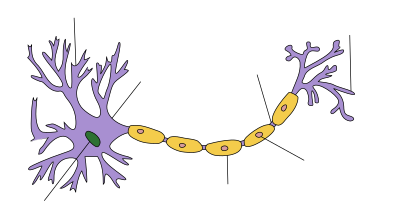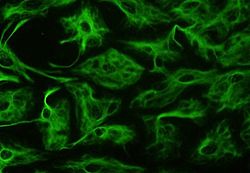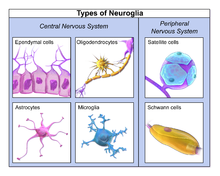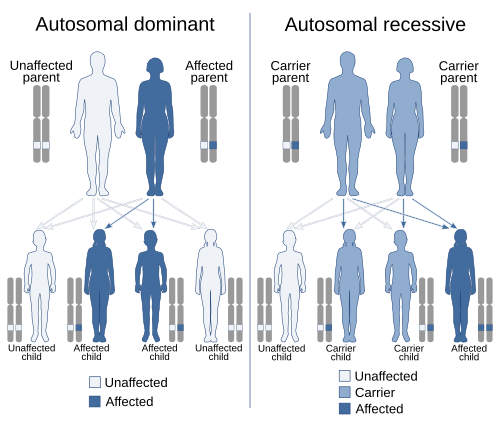From Wikipedia, the free encyclopedia
Descartes claimed that non-human animals could be explained reductively as
automata —
De homine, 1662.
Reductionism is any of several related philosophical ideas
regarding the associations between phenomena which can be described in
terms of other simpler or more fundamental phenomena.
[1]
The Oxford Companion to Philosophy
suggests that reductionism is "one of the most used and abused terms in
the philosophical lexicon" and suggests a three part division:
[2]
- Ontological reductionism: a belief that the whole of reality consists of a minimal number of parts.
- Methodological reductionism: the scientific attempt to provide explanation in terms of ever smaller entities.
- Theory reductionism: the suggestion that a newer theory does
not replace or absorb an older one, but reduces it to more basic terms.
Theory reduction itself is divisible into three parts: translation,
derivation and explanation.[3]
Reductionism can be applied to any
phenomenon, including
objects,
explanations,
theories, and meanings.
[3][4] [5]
For the sciences, application of methodological reductionism attempts
explanation of entire systems in terms of their individual, constituent
parts and their interactions. For example, the temperature of a gas is
reduced to nothing but the average kinetic energy of its molecules in
motion.
Thomas Nagel speaks of
psychophysical reductionism (the attempted reduction of psychological phenomena to physics and chemistry), as do others and
physico-chemical reductionism (the attempted reduction of biology to physics and chemistry), again as do others.
[6] In a very simplified and sometimes contested form, such reductionism is said to imply that a system is
nothing but the sum of its parts.
[4][7]
However, a more nuanced opinion is that a system is composed entirely
of its parts, but the system will have features that none of the parts
have.
[8] "The point of mechanistic explanations is usually showing
how the higher level features arise from the parts."
[7]
Other definitions are used by other authors. For example, what
John Polkinghorne terms
conceptual or
epistemological reductionism
[4] is the definition provided by
Simon Blackburn[9] and by
Jaegwon Kim:
[10]
that form of reductionism concerning a program of replacing the facts
or entities entering statements claimed to be true in one type of
discourse with other facts or entities from another type, thereby
providing a relationship between them. Such an association is provided
where the same idea can be expressed by "levels" of explanation, with
higher levels reducible if need be to lower levels. This use of levels
of understanding in part expresses our human limitations in remembering
detail. However, "most philosophers would insist that our role in
conceptualizing reality [our need for an hierarchy of "levels" of
understanding] does not change the fact that different levels of
organization in reality do have different
properties."
[8]
Reductionism strongly represents a certain perspective of
causality.
In a reductionist framework, the phenomena that can be explained
completely in terms of relations between other more fundamental
phenomena, are termed
epiphenomena.
Often there is an implication that the epiphenomenon exerts no causal
agency on the fundamental phenomena that explain it. The epiphenomena
are sometimes said to be "nothing but" the outcome of the workings of
the fundamental phenomena, although the epiphenomena might be more
clearly and efficiently described in very different terms. There is a
tendency to avoid considering an epiphenomenon as being important in its
own right. This attitude may extend to cases where the fundamentals are
not obviously able to explain the epiphenomena, but are expected to by
the speaker. In this way, for example, morality can be deemed to be
"nothing but" evolutionary adaptation, and consciousness can be
considered "nothing but" the outcome of neurobiological processes.
Reductionism should be distinguished from
eliminationism:
reductionists do not deny the existence of phenomena, but explain them
in terms of another reality; eliminationists deny the existence of the
phenomena themselves. For example, eliminationists deny the existence of
life by their explanation in terms of physical and chemical processes.
Reductionism also does not preclude the existence of what might be termed
emergent phenomena,
but it does imply the ability to understand those phenomena completely
in terms of the processes from which they are composed. This
reductionist understanding is very different from
emergentism, which intends that what emerges in "emergence" is more than the sum of the processes from which it emerges.
[11]
Types
Most philosophers delineate three types of reductionism and anti-reductionism.
[2]
Ontological reductionism
Ontological
reductionism is the belief that reality is composed of a minimum number
of kinds of entities or substances. This claim is usually
metaphysical, and is most commonly a form of
monism, in effect claiming that all objects, properties and events are reducible to a single substance. (A
dualist
who is an ontological reductionist would believe that everything is
reducible to two substances — as one possible example, a dualist might
claim that reality is composed of "
matter" and "
spirit".)
Richard Jones divides ontological reductionism into two: the
reductionism of substances (e.g., the reduction of mind to matter) and
the reduction of the number of structures operating in nature (e.g., the
reduction of one physical force to another). This permits scientists
and philosophers to affirm the former while being anti-reductionists
regarding the latter.
[12]
Nancey Murphy
has claimed that there are two species of ontological reductionism: one
that denies that wholes are anything more than their parts; and the
stronger thesis of atomist reductionism that wholes are not "really
real". She admits that the phrase "really real" is apparently senseless
but nonetheless has tried to explicate the supposed difference between
the two.
[13]
Ontological reductionism denies the idea of ontological
emergence, and claims that emergence is an
epistemological phenomenon that only exists through analysis or description of a system, and does not exist fundamentally.
[14]
Ontological reductionism takes two different forms:
token ontological reductionism and
type ontological reductionism.
Token ontological reductionism is the idea that every item that
exists is a sum item. For perceivable items, it affirms that every
perceivable item is a sum of items with a lesser degree of complexity. Token ontological reduction of biological things to chemical things is
generally accepted.
Type ontological reductionism is the idea that every type of item is a
sum type of item, and that every perceivable type of item is a sum of
types of items with a lesser degree of complexity. Type ontological
reduction of biological things to chemical things is often rejected.
[15]
Michael Ruse has criticized ontological reductionism as an improper argument against
vitalism.
[16]
Methodological reductionism
Methodological
reductionism is the position that the best scientific strategy is to
attempt to reduce explanations to the smallest possible entities.
Methodological reductionism would thus include the claim that the atomic
explanation of a substance's boiling point is preferable to the
chemical explanation, and that an explanation based on even smaller
particles (
quarks and
leptons, perhaps) would be even better.
[citation needed]
Methodological reductionism, therefore, is the opinion that all
scientific theories either can or should be reduced to a single
super~theory through the process of theoretical reduction.
Theory reductionism
Theory reduction is the process by which one theory absorbs another. For example, both
Kepler's laws of the motion of the
planets and
Galileo's
theories of motion formulated for terrestrial objects are reducible to
Newtonian theories of mechanics because all the explanatory power of the
former are contained within the latter. Furthermore, the reduction is
considered to be beneficial because
Newtonian mechanics
is a more general theory—- that is, it explains more events than
Galileo's or Kepler's. Theoretical reduction, therefore, is the
reduction of one explanation or theory to another—- that is, it is the
absorption of one of our ideas about a particular item into another
idea.
In science
Reductionist thinking and methods form the basis for many of the well-developed topics of modern
science, including much of
physics,
chemistry and
cell biology.
Classical mechanics in particular is seen as a reductionist framework, and
statistical mechanics can be considered as a reconciliation of
macroscopic thermodynamic laws with the reductionist method of explaining macroscopic properties in terms of
microscopic components.
In science, reductionism implies that certain topics of study are
based on areas that study smaller spatial scales or organizational
units. While it is commonly accepted that the foundations of
chemistry are based in
physics, and
molecular biology
is based on chemistry, similar statements become controversial when one
considers less rigorously defined intellectual pursuits. For example,
claims that
sociology is based on
psychology, or that
economics is based on
sociology and
psychology
would be met with reservations. These claims are difficult to
substantiate even though there are obvious associations between these
topics (for instance, most would agree that
psychology can affect and inform
economics). The limit of reductionism's usefulness stems from
emergent properties of
complex systems, which are more common at certain levels of organization. For example, certain aspects of
evolutionary psychology and
sociobiology are rejected by some who claim that complex systems are inherently irreducible and that a
holistic method is needed to understand them.
Some strong reductionists believe that the behavioral sciences should
become "genuine" scientific disciplines based on genetic biology, and
on the systematic study of culture (see Richard Dawkins's concept of
memes). In his book
The Blind Watchmaker,
Dawkins introduced the term "hierarchical reductionism"
[17]
to describe the opinion that complex systems can be described with a
hierarchy of organizations, each of which is only described in terms of
objects one level down in the hierarchy. He provides the example of a
computer, which using hierarchical reductionism is explained in terms of
the operation of
hard drives, processors, and memory, but not on the level of
logic gates, or on the even simpler level of electrons in a
semiconductor medium.
Others argue that inappropriate use of reductionism limits our understanding of complex systems. In particular, ecologist
Robert Ulanowicz
says that science must develop techniques to study ways in which larger
scales of organization influence smaller ones, and also ways in which
feedback loops create structure at a given level, independently of
details at a lower level of organization. He advocates (and uses)
information theory as a framework to study
propensities in natural systems.
[18] Ulanowicz attributes these criticisms of reductionism to the philosopher
Karl Popper and biologist
Robert Rosen.
[19]
The idea that phenomena such as
emergence and work within the topic of
complex systems theory pose limits to reductionism has been advocated by
Stuart Kauffman.
[20] Emergence is especially relevant when systems exhibit historicity.
[21] Emergence is strongly related to
nonlinearity.
[22]
The limits of the application of reductionism are claimed to be
especially evident at levels of organization with higher amounts of
complexity, including living
cells,
[23] neural networks,
ecosystems,
society, and other systems formed from assemblies of large numbers of diverse components linked by multiple
feedback loops.
[23][24]
Nobel laureate Philip Warren Anderson used the idea that
symmetry breaking is an example of an emergent phenomenon in his 1972
Science paper "More is different" to make an argument about the limitations of reductionism.
[25] One observation he made was that the sciences can be arranged roughly in a linear hierarchy —
particle physics,
solid state physics,
chemistry,
molecular biology,
cellular biology,
physiology,
psychology,
social sciences —
in that the elementary entities of one science obeys the principles of
the science that precedes it in the hierarchy; yet this does not imply
that one science is just an applied version of the science that precedes
it. He writes that "At each stage, entirely new laws, concepts and
generalizations are necessary, requiring inspiration and creativity to
just as great a degree as in the previous one. Psychology is not applied
biology nor is biology applied chemistry."
Disciplines such as
cybernetics and
systems theory
imply non-reductionism, sometimes to the extent of explaining phenomena
at a given level of hierarchy in terms of phenomena at a higher level,
in a sense, the opposite of reductionism.
[26]
In mathematics
In
mathematics,
reductionism can be interpreted as the philosophy that all mathematics
can (or ought to) be based on a common foundation, which for modern
mathematics is usually
axiomatic set theory.
Ernst Zermelo
was one of the major advocates of such an opinion; he also developed
much of axiomatic set theory. It has been argued that the generally
accepted method of justifying mathematical
axioms by their usefulness in common practice can potentially weaken Zermelo's reductionist claim.
[27]
Jouko Väänänen has argued for
second-order logic as a foundation for mathematics instead of set theory,
[28] whereas others have argued for
category theory as a foundation for certain aspects of mathematics.
[29][30]
The
incompleteness theorems of
Kurt Gödel,
published during 1931, caused doubt about the attainability of an
axiomatic foundation for all of mathematics. Any such foundation would
have to include axioms powerful enough to describe the arithmetic of the
natural numbers (a subset of all mathematics). Yet Gödel proved that
for any self-consistent recursive axiomatic system powerful enough to
describe the arithmetic of the natural numbers, there are propositions
about the natural numbers that cannot be proved from the axioms, but
which we can prove in the natural language with which we described the
axioms. Such propositions are known as formally undecidable
propositions. For example, the
continuum hypothesis is undecidable in the
Zermelo-Fraenkel set theory as shown by
Cohen.
In religion
Religious
reductionism generally attempts to explain religion by explaining it in
terms of nonreligious causes. A few examples of reductionistic
explanations for the presence of religion are: that religion can be
reduced to humanity's conceptions of right and wrong, that religion is
fundamentally a primitive attempt at controlling our environments, that
religion is a way to explain the existence of a physical world, and that
religion confers an enhanced survivability for members of a group and
so is reinforced by
natural selection.
[31] Anthropologists
Edward Burnett Tylor and
James George Frazer employed some
religious reductionist arguments.
[32]
Sigmund Freud held that religion is nothing more than an illusion, or
even a mental illness, and Marx claimed that religion is "the sigh of
the oppressed," and the
opium of the people
providing only "the illusory happiness of the people," thus providing
two influential examples of reductionistic views against the idea of
religion.
In linguistics
Linguistic
reductionism is the idea that everything can be described or explained
by a language with a limited number of concepts, and combinations of
those concepts.
[33] An example is the language
Toki Pona.
In philosophy
The concept of
downward causation poses an alternative to reductionism within philosophy. This opinion is developed by
Peter Bøgh Andersen,
Claus Emmeche,
Niels Ole Finnemann, and
Peder Voetmann Christiansen,
among others. These philosophers explore ways in which one can talk
about phenomena at a larger-scale level of organization exerting causal
influence on a smaller-scale level, and find that some, but not all
proposed types of downward causation are compatible with science. In
particular, they find that constraint is one way in which downward
causation can operate.
[34] The notion of causality as constraint has also been explored as a way to shed light on scientific concepts such as
self-organization,
natural selection,
adaptation, and control.
[35]
Free will
Philosophers of the Enlightenment worked to insulate human free will from reductionism.
Descartes
separated the material world of mechanical necessity from the world of
mental free will. German philosophers introduced the concept of the "
noumenal" realm that is not governed by the deterministic laws of "
phenomenal" nature, where every event is completely determined by chains of causality.
[36] The most influential formulation was by
Immanuel Kant,
who distinguished between the causal deterministic framework the mind
imposes on the world—- the phenomenal realm—- and the world as it exists
for itself, the noumenal realm, which included free will. To insulate
theology from reductionism, 19th century post-Enlightenment German
theologians, especially
Friedrich Schleiermacher and
Albrecht Ritschl, used the
Romantic
method of basing religion on the human spirit, so that it is a person's
feeling or sensibility about spiritual matters that comprises religion.
[37]
Antireductionism
The anti-reductionist considers as minimum requirement upon the
reductionist: "At the very least the anti-reductionist is owed an
account of why the intuitions arise if they are not accurate."
[38]
A contrast to reductionism is
holism or
emergentism.
Holism is the idea that items can have properties, (emergent
properties), as a whole that are not explainable from the sum of their
parts. The principle of holism was summarized concisely by
Aristotle in the
Metaphysics: "The whole is more than the sum of its parts".
Alternatives
The development of
systems thinking has provided methods for describing issues in a
holistic rather than a reductionist way, and many scientists use a
holistic paradigm.
[39] When the terms are used in a scientific context, holism and reductionism refer primarily to what sorts of
models
or theories offer valid explanations of the natural world; the
scientific method of falsifying hypotheses, checking empirical data
against theory, is largely unchanged, but the method guides which
theories are considered. The conflict between reductionism and holism in
science is not universal—- it usually concerns whether or not a
holistic or reductionist method is appropriate in the context of
studying a specific system or phenomenon.
In many cases (such as the
kinetic theory
of gases), given a good understanding of the components of the system,
one can predict all the important properties of the system as a whole.
In other systems,
emergent properties of the system are said to be almost impossible to predict from knowledge of the parts of the system.
Complexity theory studies systems and properties of the latter type.
Alfred North Whitehead's
metaphysics opposed reductionism. He refers to this as the "fallacy of
the misplaced concreteness". His scheme was to frame a rational, general
understanding of phenomena, derived from our reality.
Sven Erik Jorgensen, an
ecologist, states both theoretical and practical arguments for a
holistic method in certain topics of science, especially
ecology.
He argues that many systems are so complex that it will not ever be
possible to describe all their details. Making an analogy to the
Heisenberg
uncertainty principle
in physics, he argues that many interesting and relevant ecological
phenomena cannot be replicated in laboratory conditions, and thus cannot
be measured or observed without influencing and changing the system in
some way. He also indicates the importance of interconnectedness in
biological systems. His opinion is that science can only progress by
outlining what questions are unanswerable and by using models that do
not attempt to explain everything in terms of smaller hierarchical
levels of organization, but instead model them on the scale of the
system itself, taking into account some (but not all) factors from
levels both higher and lower in the hierarchy.
[40]
Criticism
Fragmentalism is an alternative term for ontological reductionism,
[41] although
fragmentalism is frequently used in a
pejorative sense.
[42] Anti-realists use the term fragmentalism in arguments that the world does not exist of separable
entities, instead consisting of wholes. For example, advocates of this idea claim that:
The linear deterministic approach to nature and technology promoted a
fragmented perception of reality, and a loss of the ability to foresee,
to adequately evaluate, in all their complexity, global crises in
ecology, civilization and education.[43]
The term "fragmentalism" is usually applied to reductionist modes of thought, frequently with the related pejorative term of
scientism. This usage is popular amongst some ecological activists:
There is a need now to move away from scientism and the ideology of cause-and-effect determinism toward a radical empiricism, such as William James proposed, as an epistemology of science.[44]
These perspectives are not new and during the early twentieth century,
William James noted that rationalist science emphasized what he termed fragmentation and disconnection.
[45]
Such opinions also motivate many criticisms of the scientific method:
The scientific method only acknowledges monophasic consciousness. The
method is a specialized system that emphasizes studying small and
distinctive parts in isolation, which results in fragmented knowledge.[45]
An alternative usage of this term is in
cognitive psychology. Here,
George Kelly developed "constructive alternativism" as a form of
personal construct psychology,
this provided an alternative to what he considered "accumulative
fragmentalism". For this theory, knowledge is seen as the construction
of successful
mental models of the exterior world, rather than the accumulation of independent "nuggets of truth".
[46]












